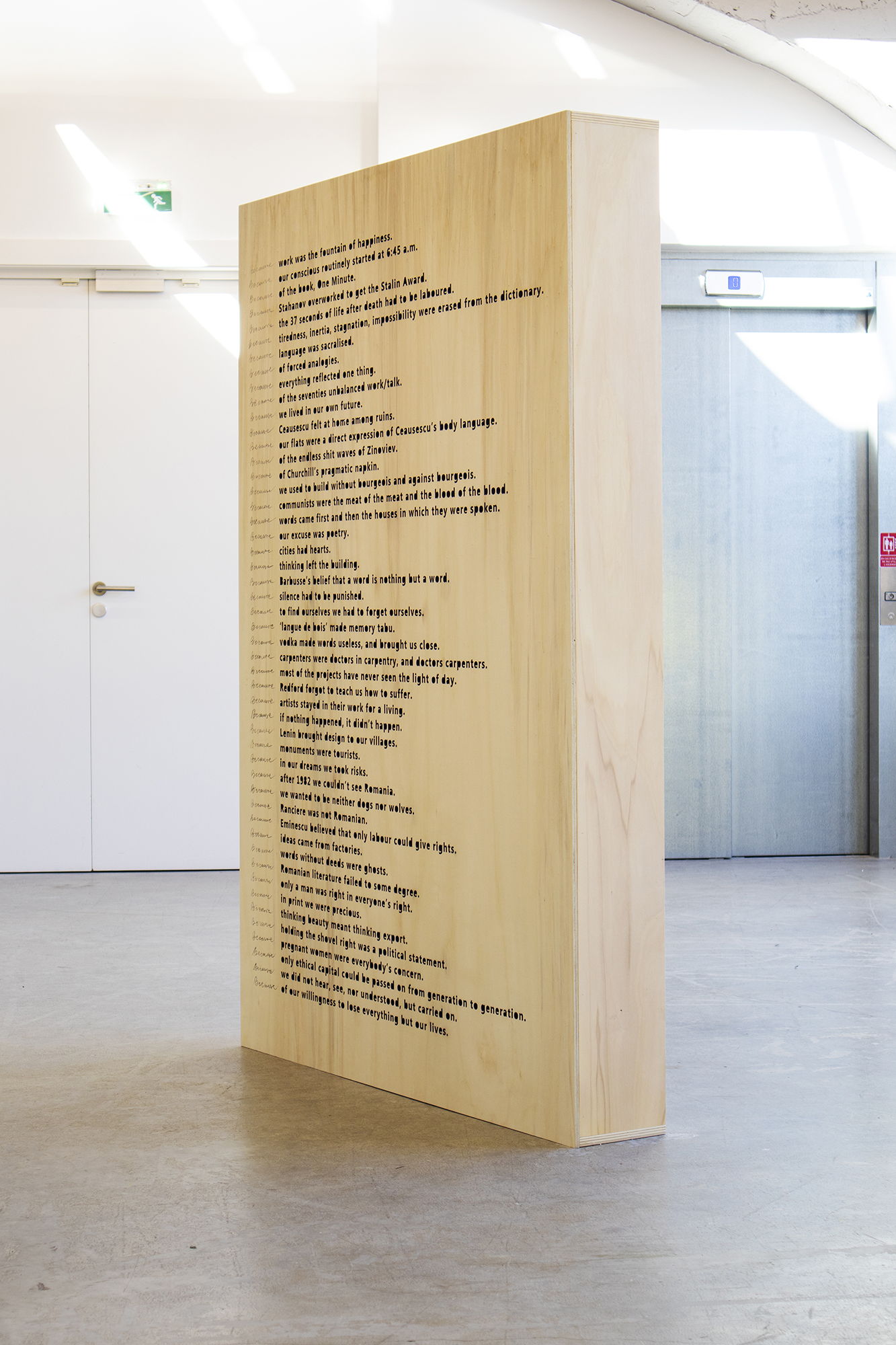LA BRIQUE, THE BRICK, CĂRĂMIDA
Artists: Ion Bârlădeanu, Ioana Bătrânu, Marius Bercea, Horia Bernea, Ștefan Bertalan, Ion Bitzan, Constantin Brâncuși, Brassaï, Geta Brătescu, Victor Brauner, Michele Bressan, Andrei Cădere, Mircea Cantor, Roman Cotoșman, Constantin Flondor, Adrian Ghenie, Ion Grigorescu, Marcel Iancu, Pavel Ilie, Mi Kafchin, Ana Lupaș, Victor Man, Hans Mattis-Teutsch, Dan Mihălțianu, Alex Mirutziu, Florin Mitroi, Ciprian Mureșan, Gellu Naum, Paul Neagu, Ioana Nemeș, Miklós Onucsan, Andrei Pandele, Dan Perjovschi, Pusha Petrov, Lea Rasovszky, Diet Sayler, Șerban Savu, Decebal Scriba, Arthur Segal, Sigma, Liviu Stoicoviciu, Mircea Suciu, Doru Tulcan, Andra Ursuța
Curated by Ami Barak
Dates: 14 February - 28 April, 2019
Opening: Wednesday, 13 February 2019, 18:30 am
Kunsthalle Mulhouse
La Fonderie - 16 rue de la Fonderie 68093 Mulhouse Cedex
As part of the France - Romania Cultural Season 2019, La Kunsthalle presents ”La Brique, The Brick, Cărămida”, a modern and contemporary art exhibition. The initiative of such an exhibition comes from the collector and benefactor from Timișoara, Ovidiu Șandor, and his desire to share his choices and passion for art in this French city twinned with his, Mulhouse. The opportunity is thus to open the doors on an intimate world, have an insight into the modern and contemporary Romanian narrative and a better understanding of the complex history of this country. This exhibition presents a committed and creative artistic scene from the early 20th century to this day.
The title of the exhibition is borrowed from an emblematic work by Ana Lupaș, an iconic figure of the avant-garde and undoubtedly a major discovery of the greatest museums in the world. It puts one brick after another in a building that is the founding act of a wonderful cultural enterprise.
From Constantin Brâncuși, Andrei Cădere, Ana Lupaș Geta Brătescu and Ion Grigorescu, leading figures in a national pantheon, to Adrian Ghenie, Victor Man, Ciprian Mureșan or Dan Perjovschi and taking into account a whole new generation that will not be long to be discovered outside national borders, the collection shows a high ambition and a strong commitment.
This is also an opportunity to invite two Romanian artists, Pusha Petrov and Alex Mirutziu, to produce and present new works. Both of their projects, produced for the occasion, will join the collection and will strengthen the presence of the young Romanian scene.
***
Ami Barak - Independent curator and art critic based in Paris, Ami Barak initiated numerous projects in France and abroad. Among the recent ones: Role-playing – Rewriting Mythologies – Daegu Photo Biennale, South Korea (2018); Life- A User’s manual – Art Encounters Timisoara Biennale of Contemporary Art (2017); What does the image stand for? – Momenta Biennale of contemporary image Montreal (2017); Julião Sarmento The Real thing – Fondation Gulbenkian Paris, Peter Kogler Next ING Art Center Brussels (2016-2017); Le Salon de Montrouge 61st, 62nd & 63rd editions – Montrouge (2016 - 2018)
















